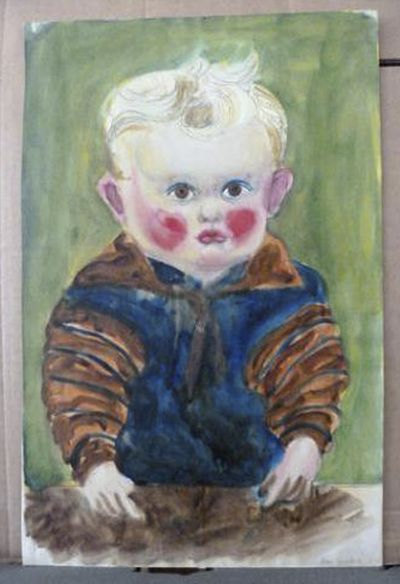Recovered Nazi art being identified
Germany posting photos on website

BERLIN – Bowing to pressure from Jewish groups and art experts, the German government made public details of paintings in a recovered trove of some 1,400 pieces of art, many of which may have been stolen by the Nazis, and said it would put together a task force to speed identification.
The German government said in a written statement that about 590 of the pieces could have been stolen by the Nazis. In a surprise move, it quickly featured some 25 of those works on the website www.lostart.de and said it would be regularly updated.
Officials had so far released few details about the art found in the Munich apartment of 80-year-old Cornelius Gurlitt, though it was known to include pieces by Matisse and Picasso.
Looted art was stolen or bought for a pittance from Jewish collectors who were forced to sell under duress during the Third Reich. For the heirs of those collectors, the discovery has raised hopes of recovering art, while the slow release of information has stirred frustration.
German Chancellor Angela Merkel’s spokesman said earlier Monday that the government understood the demands of Jewish groups in particular that the pieces be quickly made public.
“We can well understand that especially Jewish organizations are asking many questions. They represent older people who were treated very badly,” said the spokesman, Steffen Seibert.
The new task force of six experts will be put together by the German government and the state government of Bavaria, with the support of a research group on “degenerate art” at the Free University of Berlin.
Such art was largely modern or abstract works that Adolf Hitler’s regime believed to be a corrupt influence on the German people. Many such works were later sold to enrich the Nazis. Some 380 art pieces could fall under the category, the government said.
The task force will work in “parallel” with the ongoing legal probe by prosecutors in Augsburg, the government said.
Prosecutors had only said there was evidence that one item – a Matisse painting of a sitting woman – was stolen by the Nazis from a French bank in 1942.
Also Monday, Stuttgart state police spokesman Horst Haug said that local police last week took 22 pieces of art from a home in Kornwestheim in southern Germany to a safe location “because parts of these paintings were associated with the Munich art discovery.”
German media identified the owner of the paintings as Gurlitt’s brother-in-law, who reportedly was worried about the safety of his art due to the recent media frenzy.